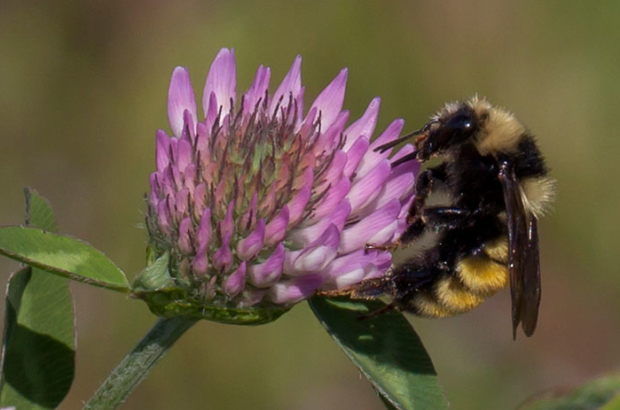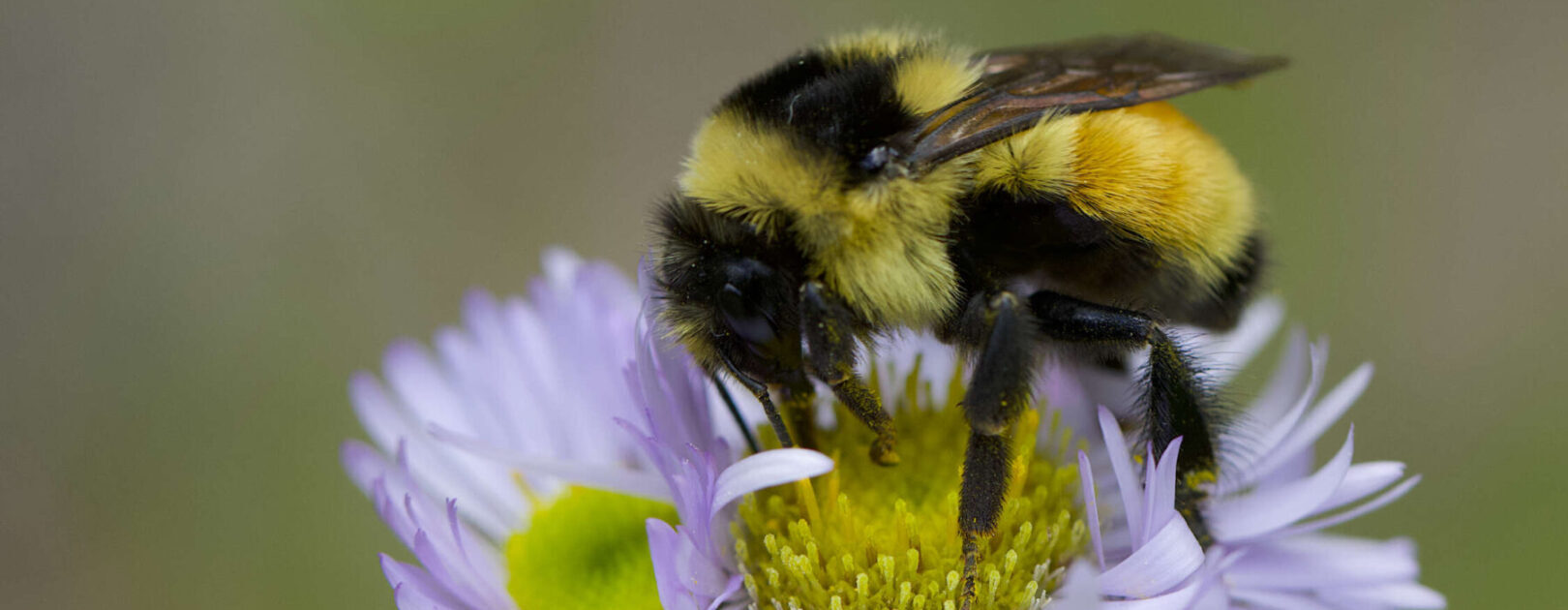Bumble bees, familiar and industrious insects, are silent messengers of environmental conditions. These charismatic pollinators face a growing list of human-induced pressures, yet after more than a decade of study in Vermont, we have much to learn.
From 2012 to 2014, VCE biologists and citizen scientists spread across the state, from roadsides to mountain meadows, to document the relative abundance and distribution of Vermont’s bumble bees, and a similar appearing bee, the Eastern Carpenter Bee.

Prior to this massive effort, there was no statewide data bank, no maps of their distribution, and no scientific assessment of their conservation status. All this work led to some shocking discoveries and put bumble bees on the conservation radar screen.
Continuing Efforts
With an incredible baseline dataset established, we’ve began a long-term monitoring effort to track ongoing changes to the bumble bee fauna of Vermont. By visiting a subset of the survey routes established during the initial Bumble Bee Atlas and using the same protocol, we are able to track not just changes in species composition, but also changes in abundance. Armed with better cameras and identification resources, this time our surveys are non-lethal with identifications done in the field or from photographs. If you are skilled in bumble bee identification and would be interested in adopting a local survey route, please reach out to !







